A double air shower is an essential component in cleanroom technology, designed to minimize contamination risks as personnel transition from unclean to clean areas. Unlike single air showers, double air showers feature two connected chambers that enhance the decontamination process. This article explores the configuration of double air showers, including their components, material features, common specifications, and operational steps, ensuring a thorough understanding for optimal implementation and maintenance.
What is the Configuration of a Double Air Shower?
A double air shower consists of two airlock chambers that use high-velocity air jets to remove dust and contaminants from personnel before they enter A CleanRoom. This dual-chamber setup provides enhanced cleansing efficiency.
Basic Structure
The double air shower typically comprises two main sections: the entry chamber and the exit chamber. Each chamber is equipped with air nozzles and interlocking doors that prevent contamination during transitions.
Component Details
Each chamber features a high-efficiency filtration system.
The air shower utilizes HEPA or ULPA filters to ensure minimal particulate presence.
The air nozzles are strategically placed to provide comprehensive coverage, ensuring all exposed surfaces are treated effectively. The operation is controlled by sensors that activate the airflow when personnel enter, ensuring optimal performance while conserving energy.
Operating Mechanism
The double air shower operates through a controlled sequence, where users must enter the first chamber, which activates the air jets, followed by a transition to the second chamber for additional cleansing.
Control Systems
Advanced control systems monitor airflow, filter status, and operational efficiency. These systems can often be integrated with the cleanroom management system for better oversight.
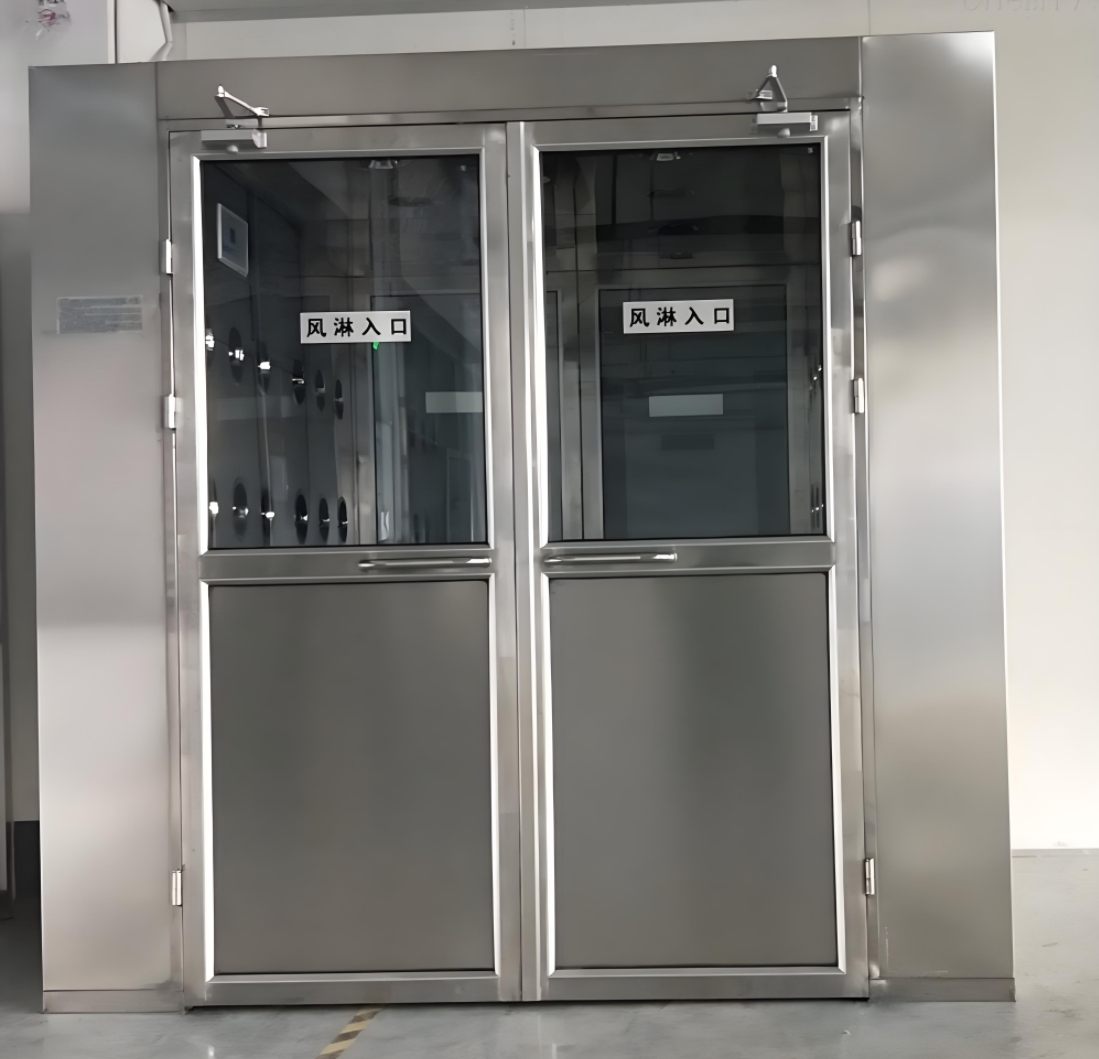
Relevant Specifications and Standards
FS209E
EU GMP Guidelines
Features of Air Shower Materials
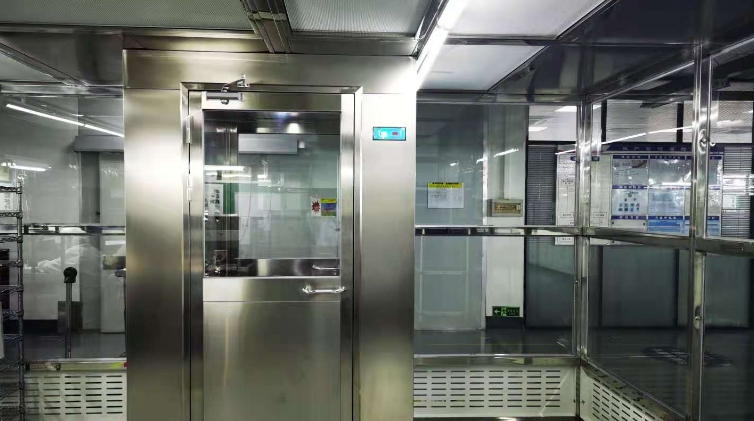
The materials used in double air showers are critical for ensuring durability, ease of cleaning, and compliance with cleanroom standards. The right materials not only improve performance but also enhance maintenance efficiency.
1. Stainless Steel
This material is favored for its corrosion resistance and ease of sanitation, essential for maintaining a cleanroom environment.
2. Acrylic or Polycarbonate
These materials are often used for viewing panels and doors due to their impact resistance and transparency, allowing visibility while ensuringsecurity and integrity.
3. Anti-static Coatings
Anti-static coatings are applied to prevent dust accumulation, which is crucial in environments sensitive to particulate contamination. These coatings help maintain a static-free environment, reducing the risk of dust particles adhering to surfaces.
Common Specifications of Air Showers
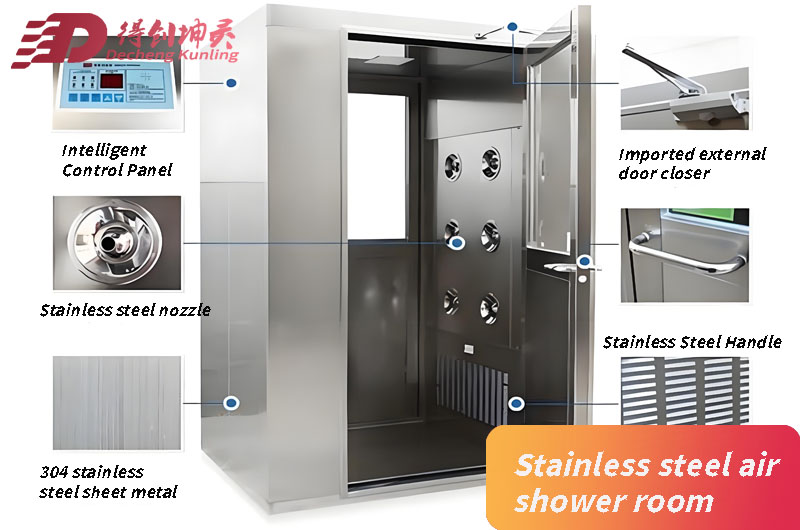
1. Airflow Rate:Typically, a double air shower has an airflow rate of 20-25 m/s to effectively remove contaminants.
2. Noise Level:The noise level is usually maintained below 70 dB to ensure a comfortable working environment for personnel.
3. Dimensions:Common dimensions include a width of 1,200 mm and a height of 2,100 mm, but these can vary based on specific requirements.
4. Control System Features:Advanced air showers may include touch-screen controls, programmable settings, and real-time monitoring capabilities to enhance usability and efficiency.
Configuration of Dedicated Air Shower Fans
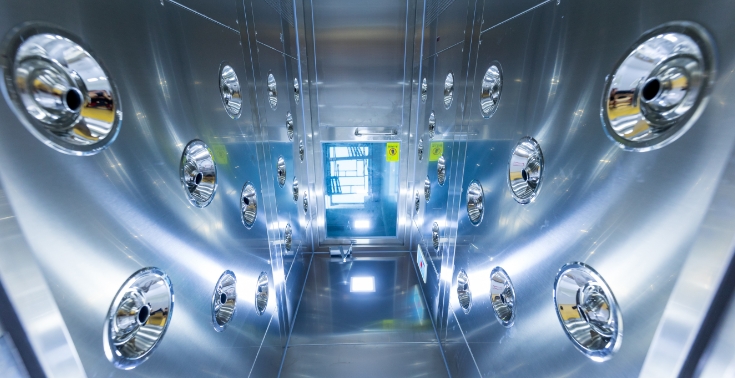
Fan Types:
Dedicated air shower fans are typically centrifugal or axial fans designed for high airflow and low noise operation. These fans ensure efficient air circulation within the chambers.
Performance Characteristics:
The fans in double air showers are engineered to provide a consistent airflow that meets Cleanroom standards. They often come with variable speed controls to adjust airflow rates based on real-time requirements. The efficiency of these fans is critical, as they must operate continuously without thermal overload, ensuring longevity and reliability.
In addition to their technical specifications, dedicated air shower fans are equipped with vibration-dampening mounts. This feature minimizes noise and enhances performance by reducing wear and tear on the fan components. Regular maintenance is essential to keep these fans functioning optimally, including periodic inspections and cleaning to prevent dust buildup.
Energy Efficiency:
Energy-efficient fans can significantly lower operational costs, making them a preferred choice for modern cleanroom facilities. The implementation of high-efficiency motors and variable frequency drives is common.
Steps for Using Air Showers
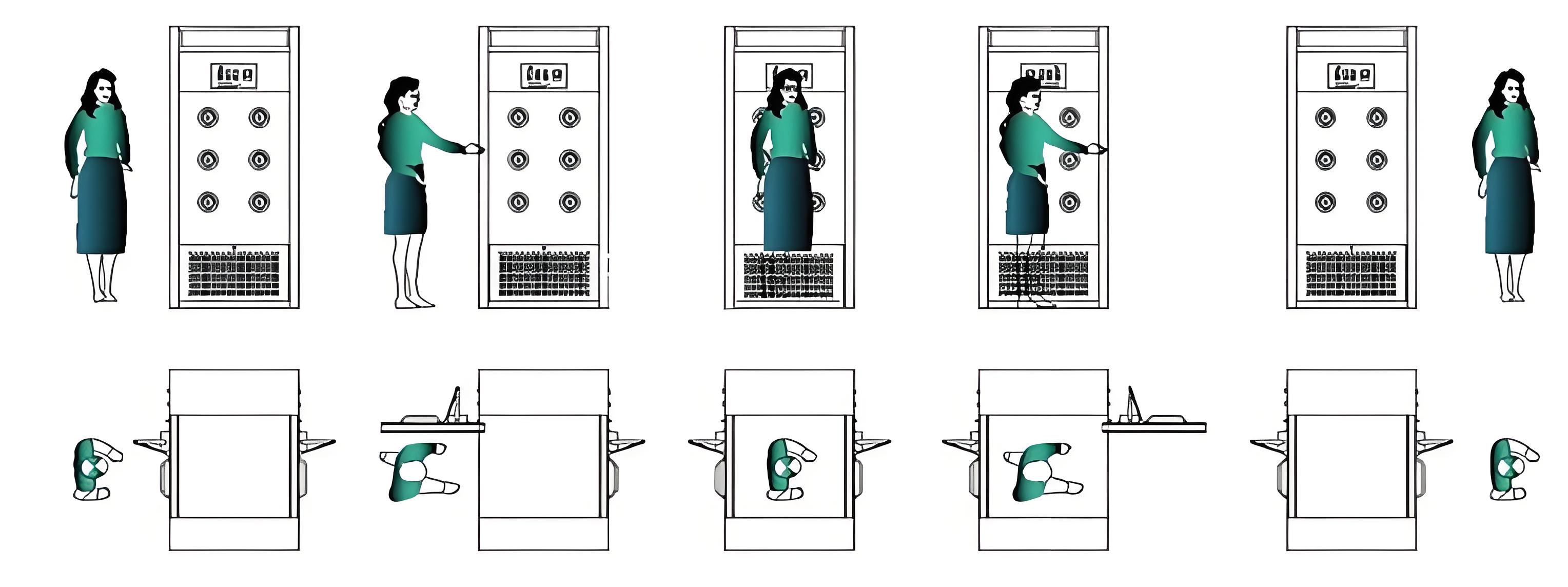
Using a double air shower effectively requires adherence to specific protocols to maximize decontamination efficiency. Proper use ensures that contaminants are minimized before entering cleanroom environments.
1. Preparation
Personnel should remove any outer garments or accessories that may carry contaminants before entering the air shower.
2. Entering the Chamber
Users must enter the first chamber, ensuring that the door closes securely behind them. This prevents cross-contamination.
3. Activation & Exit
Once inside, the air shower willactivate automatically, generating high-velocity air jets that cleanse the user. After the designated time, the exit door will unlock, allowing access to the cleanroom. Adhering to these steps helps maintain the cleanroom's integrity and complies with relevant domestic and international standards, such as ISO 14644 and FS209E.
Regular Maintenance of Air Showers
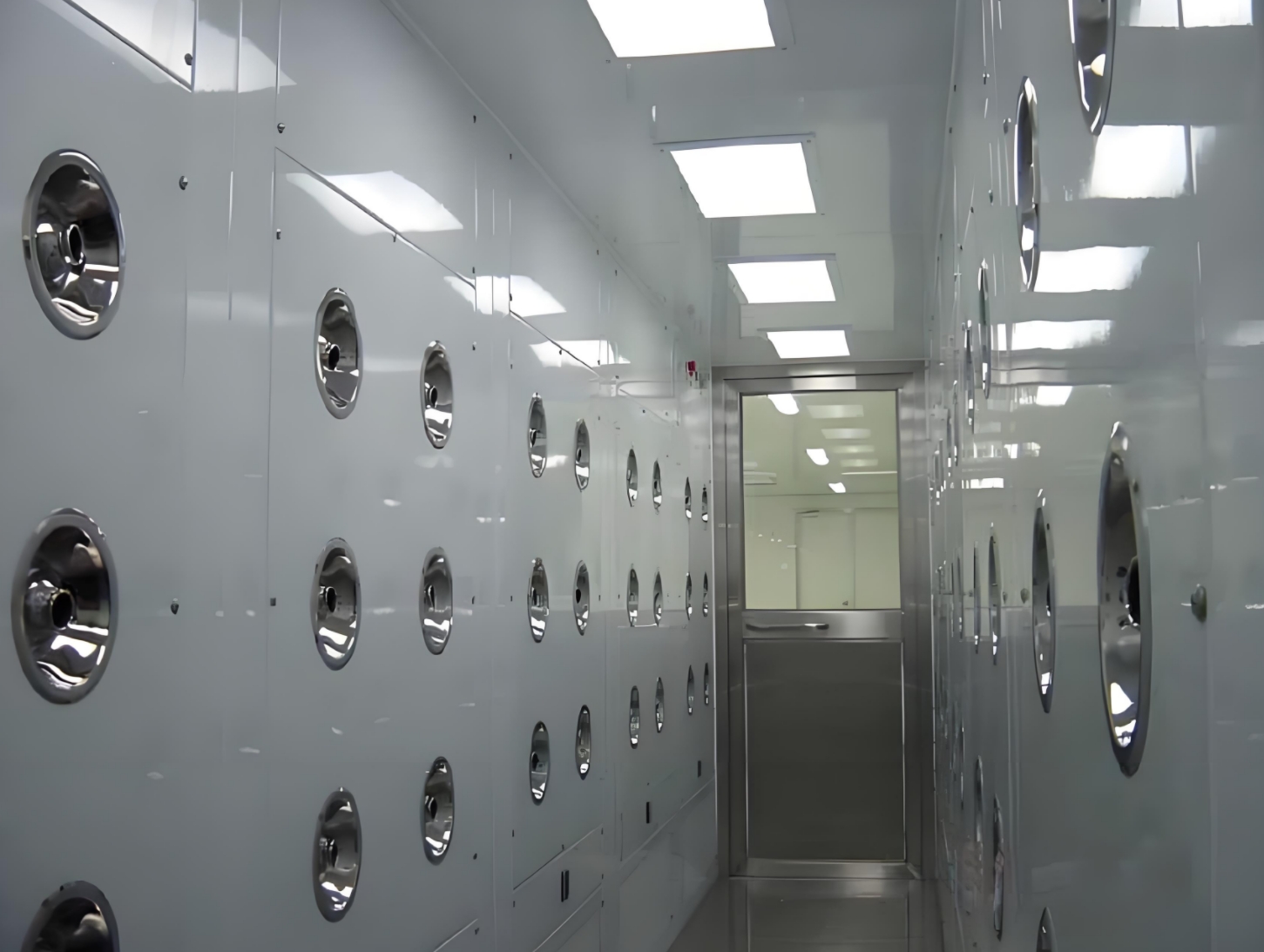
Regular maintenance of air showers is essential for ensuring optimal performance and compliance with cleanliness standards. This involves systematic checks and servicing to keep the system operating effectively.
1. Scheduled Inspections
Regular inspections should be conducted to assess the condition of filters, fans, and air nozzles. This helps identify any parts that may need replacement or repair.
2. Filter Replacement
Filters should be replaced according to the manufacturer's recommendations, typically every 6 to 12 months.
HEPA and ULPA filters play a crucial role in maintaining air quality. Regular replacement ensures that the efficiency of the air shower is maintained, preventing a drop in performance.
Monitoring filter pressure drops can help determine when a replacement is necessary. Clogged filters can lead to reduced airflow and ineffective decontamination, making timely replacement critical for maintaining cleanliness standards.
3. Cleaning Protocols
Regular cleaning of the air shower chamber and components is vital.High-touch surfaces, such as handles and panels, should be wiped down with appropriate disinfectants to minimize microbial growth and contamination risks.
4. Performance Verification
Conducting airflow and pressure tests periodically ensures that the air shower is functioning within specified parameters.
Documentation of these tests can aid in compliance audits and serves as a record of maintenance efforts. Regular performance verification can identify potential issues before they impact the cleanroom environment.
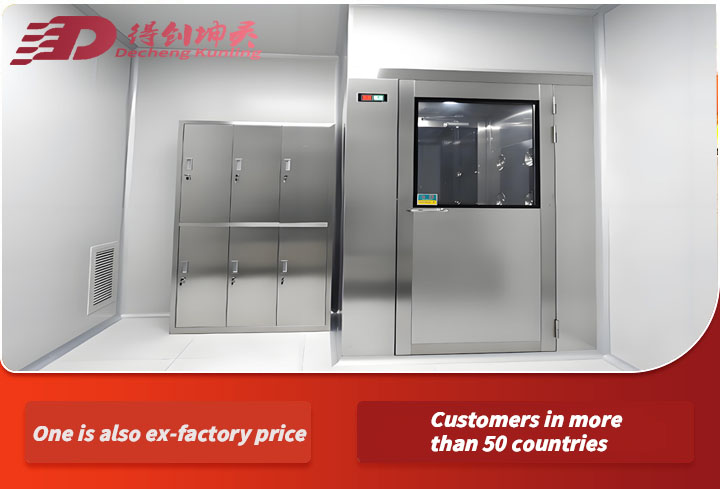
In the realm of cleanroom technology, understanding the configuration and functionality of double air showers is paramount. De Chuang Kunling Company emphasizes the importance of these systems in maintaining clean environments across various industries. By adhering to the recommended specifications, utilizing appropriate materials, and conducting regular maintenance, facilities can ensure the effective operation of double air showers, thereby enhancing their cleanroom's overall performance and reliability.
This structured article provides a comprehensive overview of double air shower configurations, features, specifications, and operational guidance, emphasizing the role of Deiiang Company in promoting best practices in cleanroom technology.
 +86 18186671616
+86 18186671616 Jason@cleanroomequips.com
Jason@cleanroomequips.com
 MENU
MENU


